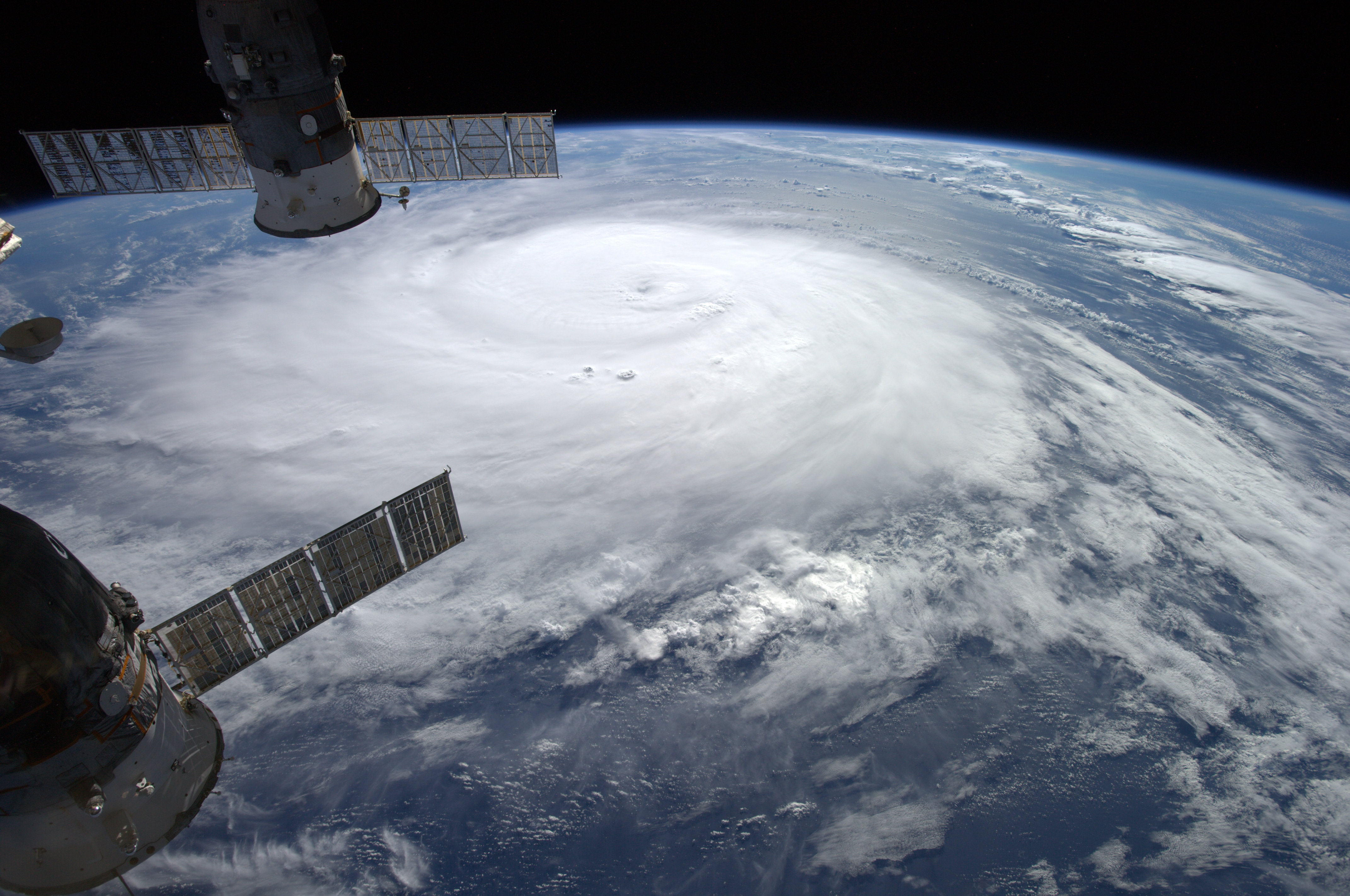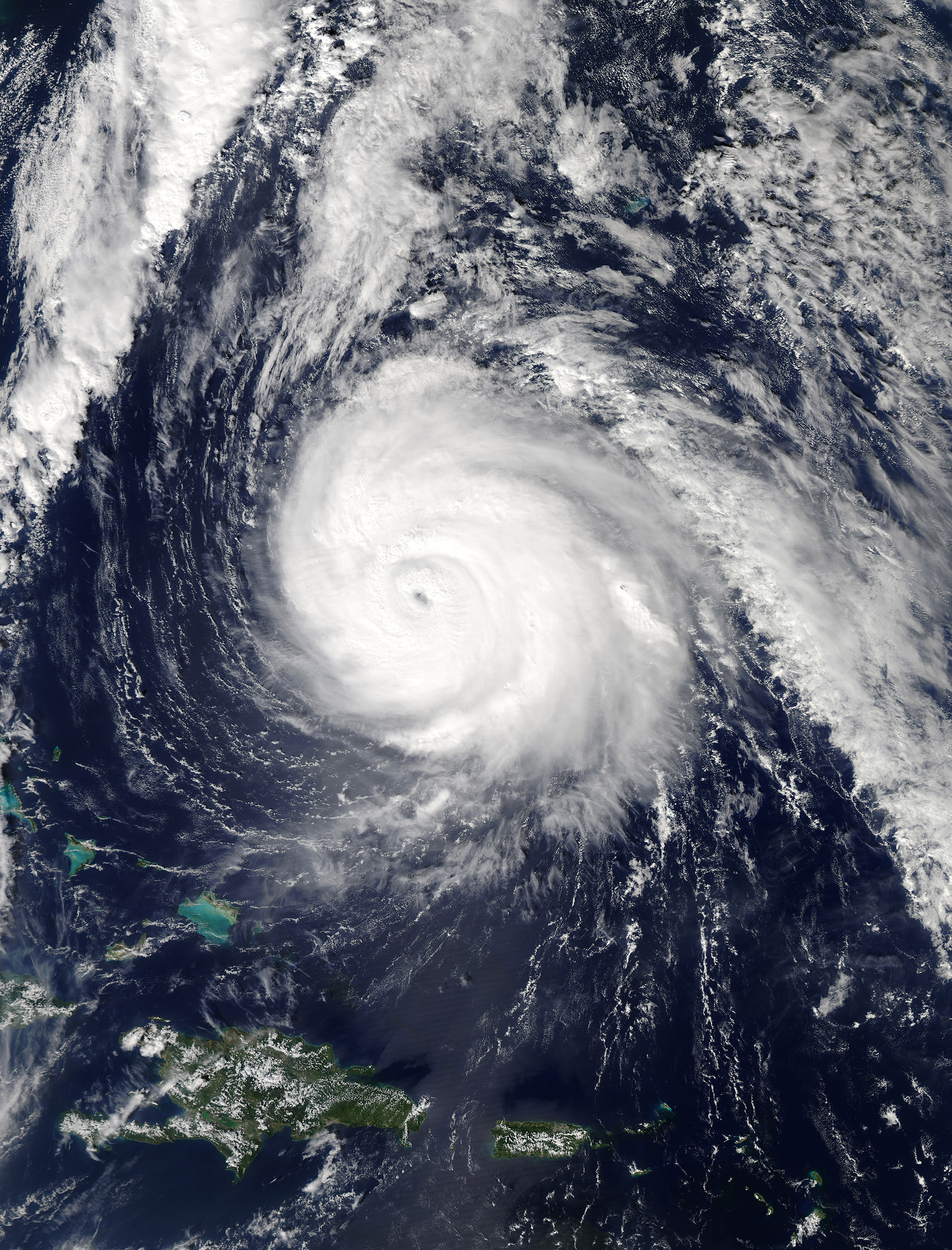Hurricanes going astray make for heavy rainfall in Europe
Tropical storms that move poleward influence the weather in Europe much more than previously supposed. A study from the Mobiliar Lab for Natural Risks at the University of Bern shows that the probability of heavy rainfall is twice as high when mid-latitude weather is disrupted by cyclones. These findings could ensure better extreme weather forecasts in the future.
In mid-October 2017, “Ophelia” paralyzed public life in large parts of Ireland: Squalls with heavy rain and wind speeds of up to 150 kph caused huge amounts of damage and made schools shut down. “Ophelia” was one of the strongest hurricanes ever observed so far east in the Atlantic. Tropical storms, which usually devastate the Caribbean, moving on to the mid-latitudes is actually nothing unusual. “Nearly half of these storms move away from tropics and can then affect the weather in Europe,” says Olivia Romppainen, Professor for Climate Impact Research at the University of Bern, and Co-Director of the Mobiliar Lab for Natural Risks. For the first time ever, and in collaboration with ETH Zurich and the Karlsruhe Institute for Technology (KIT), her group is researching how these former hurricanes impact heavy rainfall in Europe. The results have just been published in the journal “Monthly Weather Review.”
Extreme rainfall twice as likely
Roman Pohorsky, staff member at Mobiliar Lab and principal author of the study, analyzed 146 so-called “recurving” tropical storms over the North Atlantic for the period between 1979 and 2013. As a result, he was able to quantify the effect of former hurricanes on the weather in Europe for the first time. “It has been shown that two to three days after the arrival of a storm in the mid-latitudes, the probability of heavy rainfall in Europe is doubled,” explains Olivia Romppainen. According to the climate impact researcher, these links hadn’t been systematically researched until now, they had just been assumed based on individual case studies.
The tropical storms form in the Atlantic between Africa and North America and then move towards the Caribbean and the Gulf of Mexico where they largely then peter out. However, scores of these former tropical storms push forward towards the north and the mid-latitudes. There, they can affect the weather in Europe in two different ways: Either the ex-hurricane moves straight on towards Europe, or it remains in the North Atlantic where it disrupts the jet stream – the strong air currents in the atmosphere. Both types often lead to extreme rainfall in Europe.
More reliable extreme weather forecasts
One example of a former hurricane to also affect Switzerland was “Gonzalo” at the end of October 2014. First of all, the storm tore over England and Germany at high speed. It then swept over Switzerland with gusts of wind of up to 185 kph, and kept the police and the fire department very busy: Trees were uprooted, roofs were stripped off, and cellars were flooded due to heavy rainfall. This was followed by winter arriving early, with up to a meter of snow falling in the mountains. Finally, “Gonzalo” moved south towards Greece where its remnants caused snowstorms and flooding.
Former tropical storms also have an effect on weather forecasts in Europe. “On days when former hurricanes push forward into the mid-latitudes,” explains Olivia Romppainen, “the quality of the forecasts often decreases.” The knowledge now gained by the Mobiliar Lab on the links between tropical storms and heavy rainfall on the other side of the Atlantic could contribute to improvements in forecasting extreme weather in the medium term.
Oeschger Center for Climate Change ResearchThe Oeschger Center for Climate Change Research (OCCR) is one of the strategic centers of the University of Bern. It is a leading climate change research center, and is bringing together researchers from 14 institutes and four faculties. The OCCR conducts interdisciplinary research right on the front line of climate change research. The Oeschger Center was founded in 2007 and bears the name of Hans Oeschger (1927-1998), a pioneer of modern climate research, who was active in Bern. |
Mobiliar Lab for Natural RisksThe Mobiliar Lab for Natural Risks is a joint research initiative of the Oeschger Center for Climate Change Research at the University of Bern and of Mobiliar. The main focus of the research is flooding, storms and hail and their potential for damage. The investigation and visualization of the damage potential of flooding is a central focus of the research. |
Publication:Pohorsky, R., M. Röthlisberger, C.M. Grams, J. Riboldi, and O. Martius, 0: The climatological impact of recurving North Atlantic tropical cyclones on downstream extreme precipitation events. Mon. Wea. Rev., 0, https://doi.org/10.1175/MWR-D-18-0195.1 |
2019/03/26




